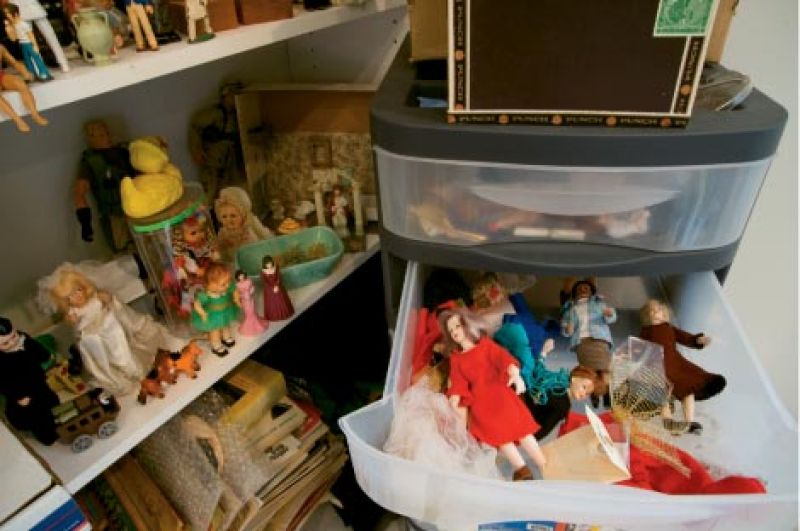
It’s no surprise that on the Charleston art scene, landscapes sell. So a few years back, Kristi Ryba joined friends in the field to paint scenes like the marsh by her John’s Island home. The endeavor helped shape her art but ultimately left her unsatisfied, so she returned to exploring women and family and her trademark surreal domestic imagery. She returned, for all intents and purposes, to the dollhouse.
Her work, currently on display at Columbia College’s Goodall Gallery, isn’t intended as a celebration or denigration of traditional women’s roles, which she feels are undervalued, but rather a perplexity she has pursued in paintings, prints, stop-motion animation, and books. “She poses questions that perhaps we didn’t even know we needed to ask,” says Mark Sloan, director of the Halsey Institute of Contemporary Art, who included one of Ryba’s works in the Contemporary Carolina Collection at MUSC’s Ashley River Tower.
Ryba, who’s represented at Corrigan Gallery, began using dolls in the mid-’80s while at the College of Charleston. She’s since studied printmaking in Italy and earned her master’s at Vermont College. However, as an undergrad, she was a nontraditional student: 32, divorced and remarried, raising two daughters. She turned to her childhood dolls to study figures and eventually manipulated them, often showing women as caretakers and housekeepers.
Done in gouache, Nuclear Family has a contemporary look despite the 1950s furnishings and figures. It’s Ozzie and Harriet tinged with anxiety: the colored dollhouse scenes framed by images of a mother’s struggle to meet the needs of family and home. The artist fixates on the post-World-War II period because it fits her parents’ narrative.
Before she was born, they drove across the country with her older siblings in a trailer. Ryba shows this journey in Heading West, a large gouache that collects paintings done from tiny family photos enlarged with new technology. The trailer dominates, with smaller glimpses of the domestic demands of the trailer park where they lived. “Sheets and towels are always fluttering in the background,” Ryba remarks.
Her work with vintage photos began as an exploration of her brother as a boy and the realization that he had a mental disability. Ryba also focuses on him in smaller pieces and a stop-motion movie that’s her most ambitious yet. She admits it’s hard to find time to finish the painstaking work, which will be exhibited in the spring at City Gallery at Waterfront Park. Even now, the 57-year-old grandmother feels the tugs of family and real-life dollhouse distractions.
Visit www.kristiryba.com to see Ryba’s paintings and other work.